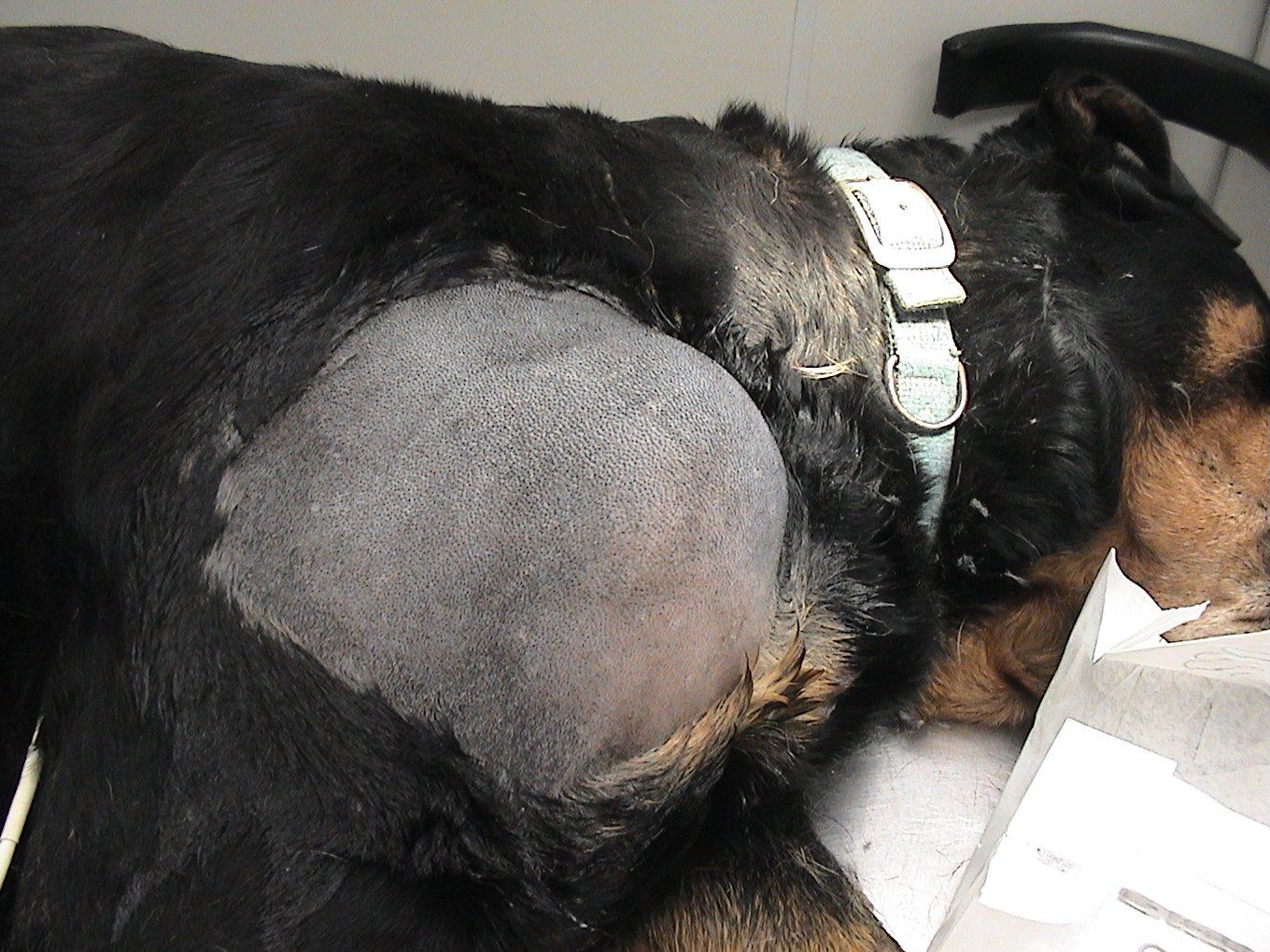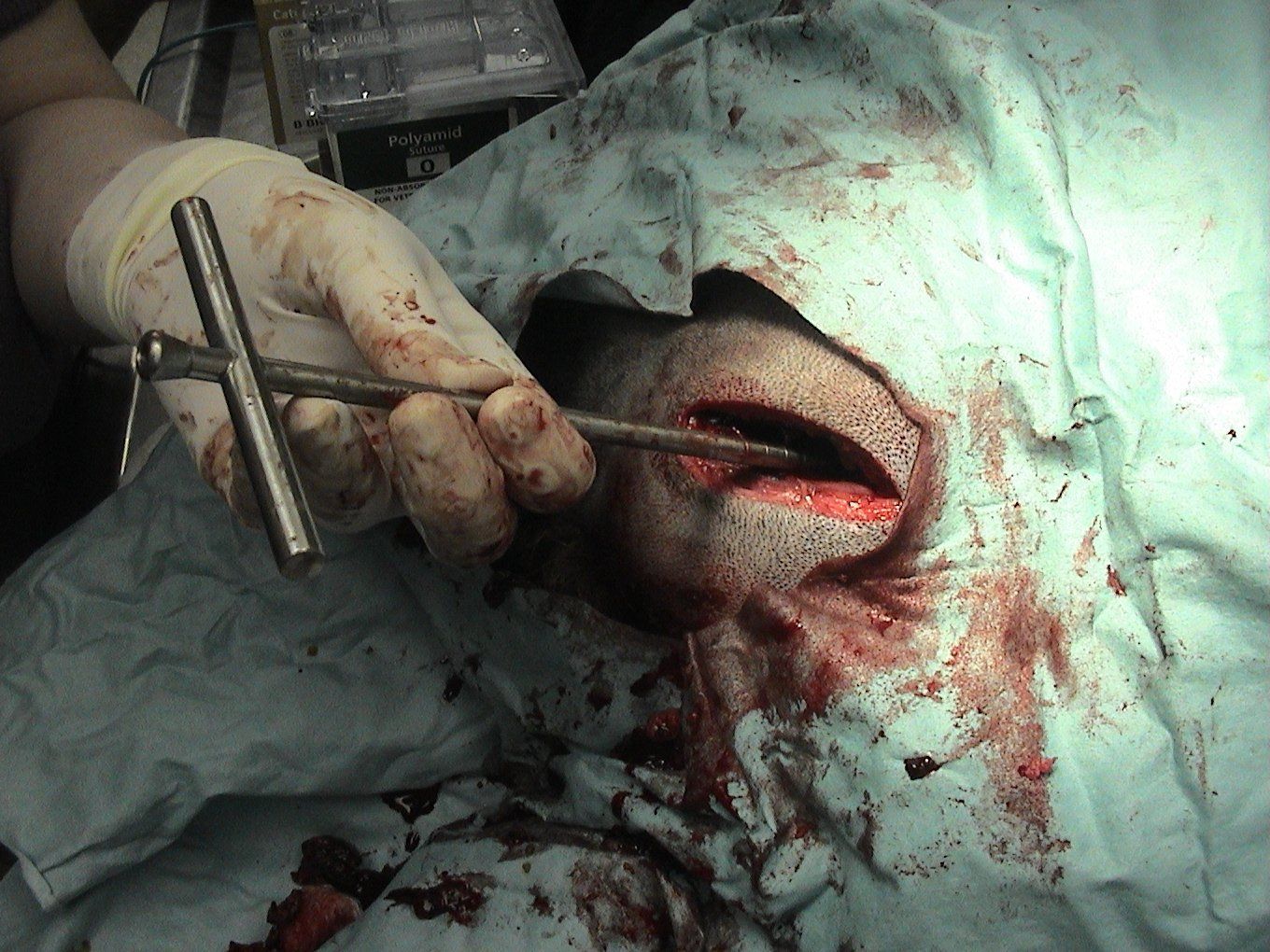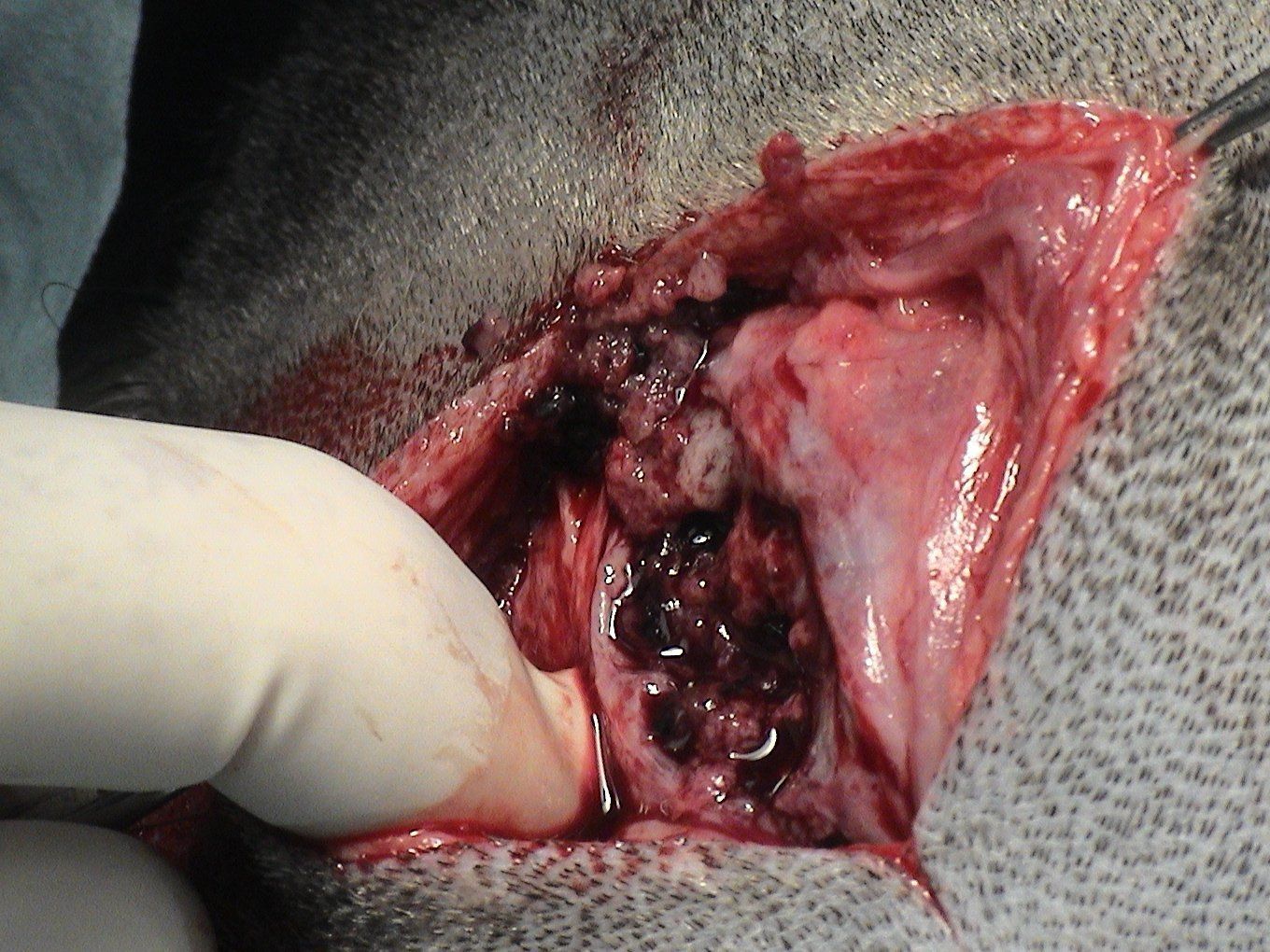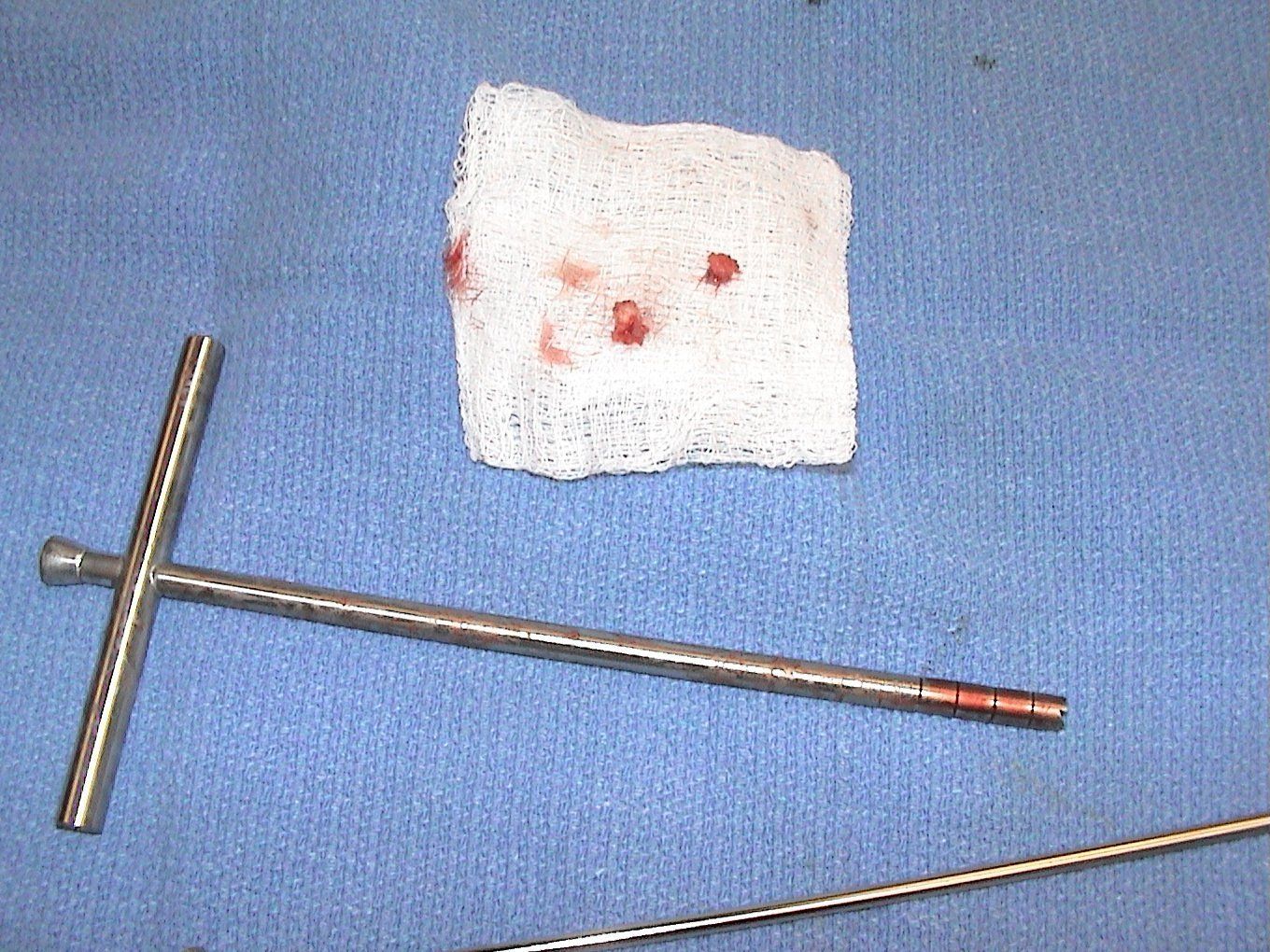"The Best Care For Your Best Friend."
Bone Cancer
This is an older Rottweiler that presented for pain, lameness, and swelling in the front leg. After examination and x-rays of the area, it was suspected that the dog had a bone tumor. However, other diseases such as infection due to fungus, cartilage cancers, etc. can have a similar history and appearance. To obtain a proper diagnosis so that the correct treatment can be recommended, a biopsy of the affected bone is indicated.
After exposing the affected area of bone, a trephine punch is used to obtain biopsy samples from the center of the bone. Once the bone is exposed, the punch is screwed through the cortex or outer surface of the bone and placed into the medullary cavity.
This is what the bone looks like at the site of biopsy. The bone was soft and brittle.
The long plunger (below) is used to release the biopsy samples from the biopsy punch. The samples were submitted for histopathology and diagnosed as osteosarcoma. Osteosarcoma is the most common bone tumor in dogs. Osteosarcoma has a high rate of spread to the lungs and other tissues. At the time of diagnosis, most osteosarcomas have already spread to the lungs. The early cancer cells are often not detectable on x-rays until they have grown to a significant size. Because of the high rate of spread, the treatment of choice for osteosarcoma is limb amputation and follow-up chemotherapy. Without limb amputation, many dogs will experience spontaneous fractures at the site of the tumor, chronic pain and discomfort, and a continuing chance for the spread of cancer cells.
Many pet owners will not consider chemotherapy as a treatment option because of the fear of side effects. While there are side effects and they can be serious, animals will often tolerate chemotherapy better than humans. The chemotherapy protocol often recommended for osteosarcoma involves the administration of cisplatin IV every three weeks for at least 5 doses. The first dose is given at the time of limb amputation. Without chemotherapy, dogs often have a survival rate of under 6 months. With chemotherapy, survival time can be extended to a year or more. Of course, there is always individual variation and overall survival times depend on many factors such as the age of the animal, length of time the tumor was present before diagnosis, etc. Given the age of this particular dog, the duration of the disease, and several other factors the owners elected euthanasia when the diagnosis was confirmed.






Share On: